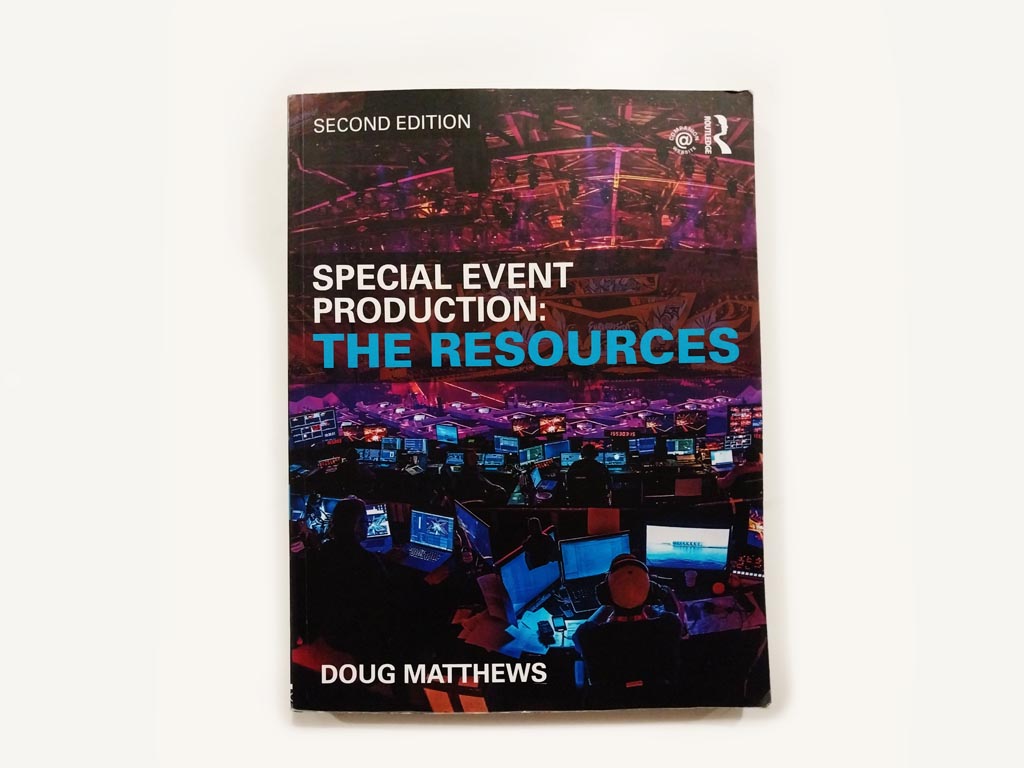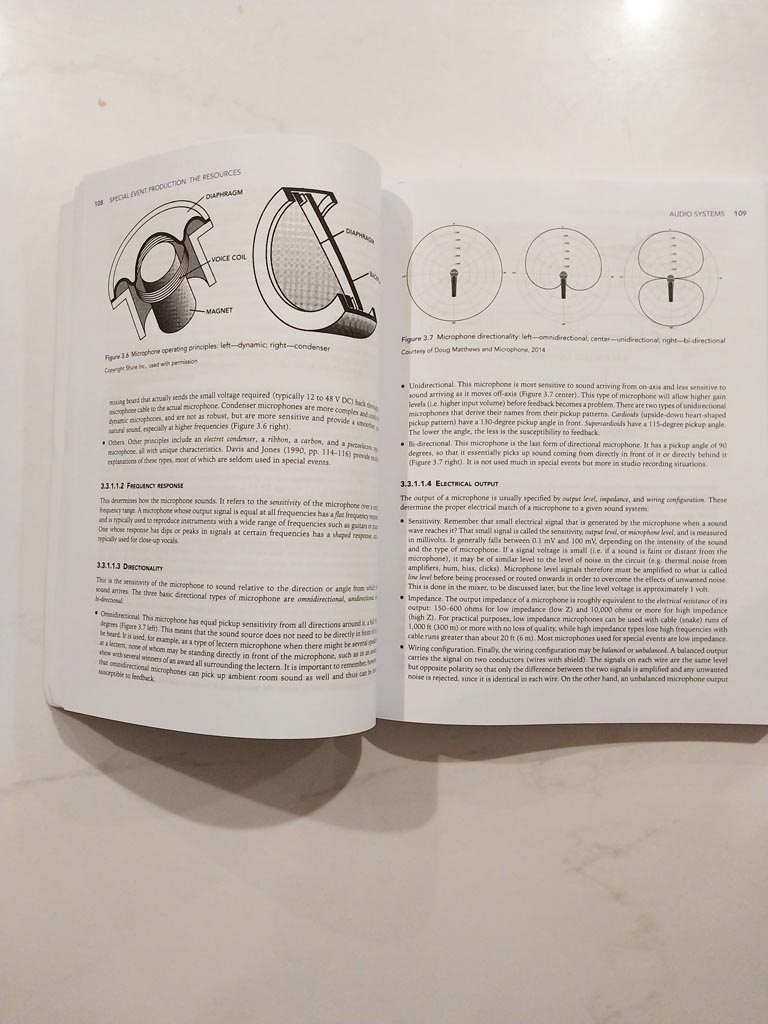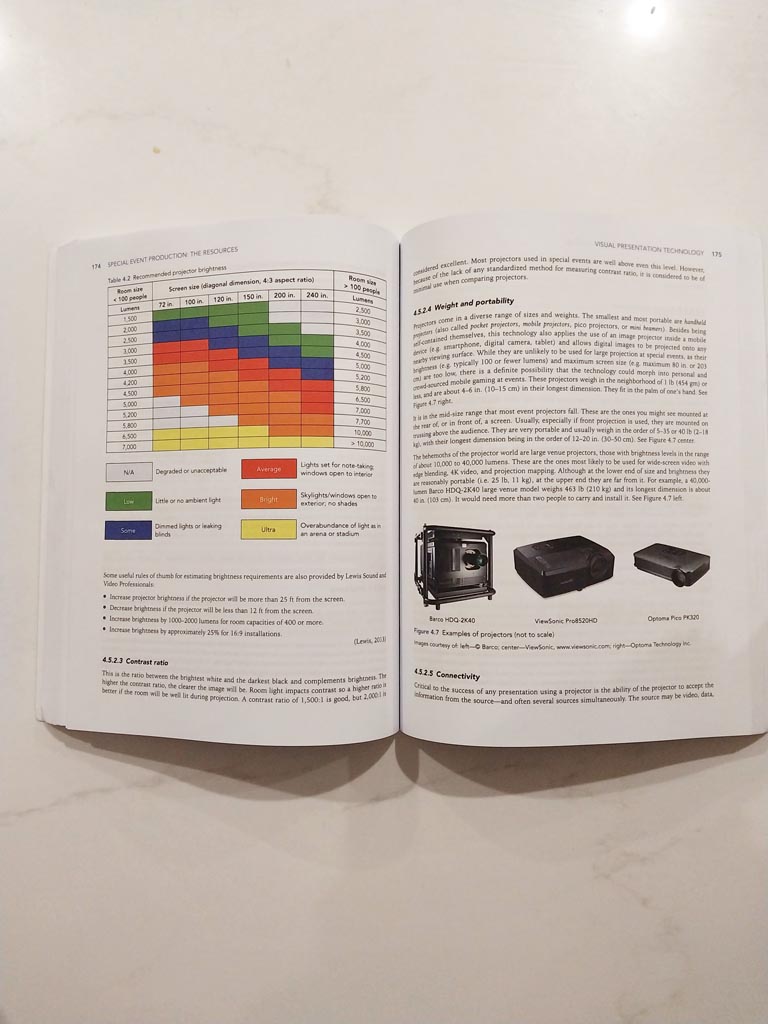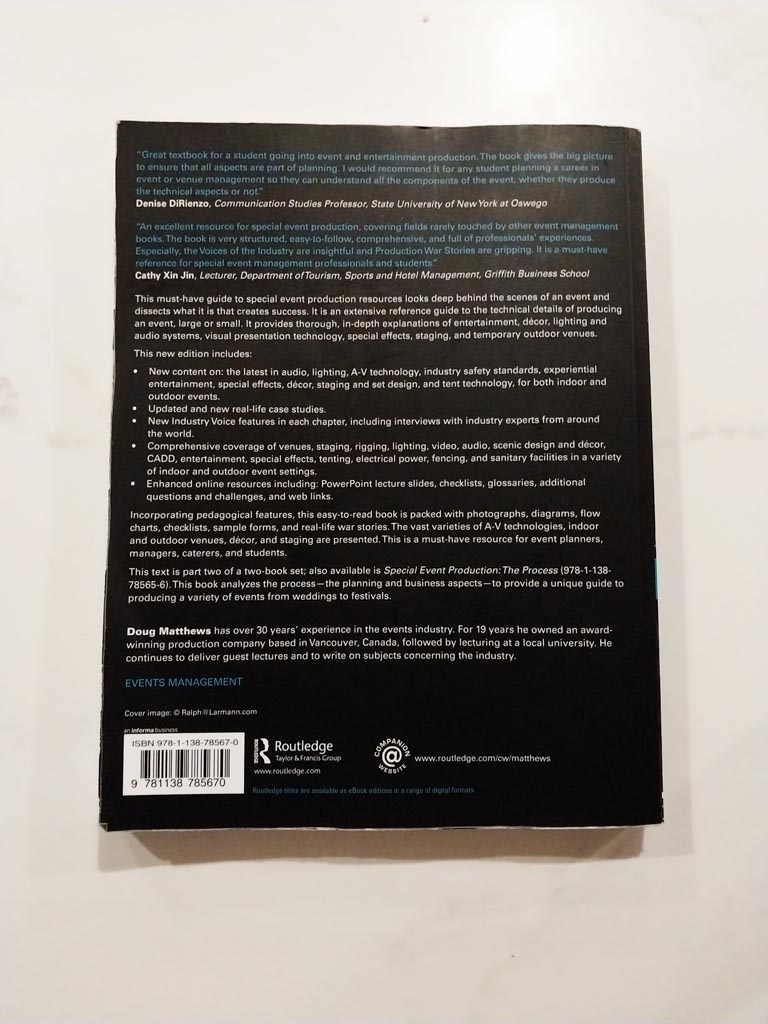REVIEW
30 Oct 2023
Special Event Production: The Resources, 2nd edition

Subscribe to CX E-News
“A good producer will co-ordinate acts; a great producer will co-ordinate a concept.”
(Author – Doug Matthews)
About The Book
Special Event Production: The Resources is the second book in a two-part series on Special Event Production. Written mainly for event producers, managers and co-ordinators, this edition – the second – was first released way back in 2015.
What this book offers the reader is a wide, top-level overview of the main elements that make up special event production. Rather than talk through the steps and procedures to make an event happen, the book gives a good in-depth summary of the core components involved in an event and how they tie into the bigger picture.
It’s laid out as a textbook for easy reference. The book has nine chapters, covering a wide variety of topics:
Audio Systems: As Doug Matthews states in the book: “Poor sound quality can be catastrophic for an event.” This chapter gives an overview of audio systems in special events and goes over things such as basic acoustic theory, the main audio system groups and components, and how they interact with the whole audio system, as well as signal flow and equipment locations. The main thrust of the chapter is to stress the importance of audio systems and their internal elements, rather than any detailed analysis of how to set up and operate an audio system. This is also one of the longest chapters in the book.

Visual Presentation Technology: “There is nothing worse than a brilliant image of a fuzzy concept.” This chapter stresses the point that the concept must come before the gear; a very common mistake made by event producers. As Doug Matthews says, “All the most advanced equipment and largest screens in the world will not make an event successful if the purpose of the visual presentation is not understood.” This chapter covers things like the purpose of visual presentations, content in visual presentations, visual sources, control and distribution, LED walls, projection and display equipment. This space is arguably one of the fastest moving spaces in special events, with new technology being the primary driver.

Lighting Systems: “The objectives (of event lighting) include visibility, relevance, composition and mood.” This chapter, written much more as an overview than a how-to, covers topics such as the objectives of event lighting, qualities of light, types of lighting instruments, lighting design, what happens between concept and execution, lighting control, set up and operation, as well as specialty lighting. Lighting technology is also changing at a fast rate with the adaption of LED luminaires and digital lights, however the fundamental principles in the book are still relevant today.
Special Effects: “Special effects used in a special event are unusual, and creative technological surprises are timed to emphasise an event element.” This chapter covers the components that go into making a successful special effects display as well as the different types of special effects you may find in live events. Safety is one of the main drivers of change in our industry.
Staging and Set Design: The chapter on staging covers the language of the stage, types and construction of stages, placement and sizing of stages, stage draping, stage sets and set design. A solid understanding of the strengths and limitations of staging and set is crucial for an event producer. As Doug Matthews humorously puts it: “Staging for special events is more than just decks and legs.”

Who is the book for?
This book is for anyone involved in the creation, or management of, an event: producers, managers, event co-ordinators, production managers, production co-ordinators, technical directors and students. In a nutshell, it’s for anybody interested in the overall picture of what makes up an event from a technical standpoint, without offering a deep dive into the fine detail. Venue managers and technical managers, in particular, would benefit greatly from the concepts presented in this book.
Who’s it not for?
This book is not for people looking for information on a certain discipline, such as lighting or sound. Although these topics are covered quite well in the book, they’re written to provide an overview of the concepts involved, rather than offer advanced learning to the technician or operator tasked with delivering such systems. For advanced insights into the more technical aspects of these roles, there are other more suitable books that go more in-depth on these topics.
The Verdict
Overall, Special Event Production: The Resources is a fantastic book. A must read for any student of the industry or aspiring event producer. It’s a great primer for anyone looking to learn a little about everything in the special events industry. It stays on topic well, was written especially for our industry and does not drift off topic. Its author, Doug Matthews, is an industry veteran, not an academic discussing theoretical aspects of lights and sound.
There’s a good amount of detail spread across the various chapters on a wide variety of topics, and I appreciate that it would be very difficult to write a textbook on our industry, but it does feel like a few topics are left a little unexplored. For example, while it was mentioned, and there was a section for it, perhaps a whole chapter should have been dedicated to rigging and trussing given its central role at most events. I would also like to have seen more on integration and networking, and perhaps a chapter on how to read, interpret and create different types of technical documentation, such as a lighting plan, an input list, a vision schematic, a band rider, and a run sheet.
The book was written back in 2015, and while this may not seem that long ago, a lot has changed in that time with respect of the technology, legislation and OH&S requirements. While certain aspects seem a little dated at times, the book nevertheless lays down an excellent foundation that can be built upon and revisited repeatedly.

About the author
A writer and award-winning special event producer based in Vancouver, Canada, Doug Matthews is the author of five textbooks on how to create special events full of emotion.
Ratings out of 10
Readability: 7
Special Event Production: The Resources is written as a textbook, so it’s easy to find stuff but is perhaps a little dense to read.
Supporting Materials: 7
Much like the first book in the series – Special Event Production: The Process – there’s a companion website that contains links to further information that’s well worth the read. For serious readers and students alike, these links constitute a gold mine of great stuff. There are also diagrams and pictures on the site to further explain the various concepts discussed in the book.
Relevance: 8
Special Event Production: The Resources is highly relevant to the right person. If you’re involved in the creation and delivery of an event, as opposed to working as a specialist on one aspect of it, this book is for you. For example, the audio section wouldn’t exactly be thrilling or insightful to an audio team member already tasked with delivering a quality sound system.
But for a production manager needing to understand the scope of the system required for the event, it’s great.
Usefulness: 8
Special Event Production: The Resources is a very useful book. It works well as a reference tome that can be referred to over and over as needed. If its relevant to you specifically, don’t borrow it, own it. Although at a tick over $160, I wouldn’t say the book represents the best value for money.
Overall Rating: 7
Subscribe
Published monthly since 1991, our famous AV industry magazine is free for download or pay for print. Subscribers also receive CX News, our free weekly email with the latest industry news and jobs.




